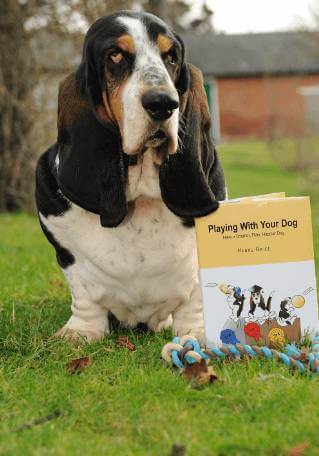When it comes to us humans, evidence suggests when we’re engaged in a conversation with someone typically 93% of what we communicate is non-verbal. That means our body language and tone of voice is what people are focusing on, leaving just 7% for the actual content (our words).
Non verbal communications (NVC’s) include; our tone of voice and pitch, body posture, micro expressions of our face and the different gestures that we may use. Our body, face and voice all reveal information, and often reveal hidden secrets. We may say one thing but our body language can give away what is really going on inside. In order to accurately interpret body language and facial expression we need to observe the individual over many months to understand their behaviour in varied contexts – this provides an understanding of what is that individual’s ‘normal’ behaviour.
So how does this apply to dogs?
Think about the average domestic dog; he spends many hours a day at home, mooching about and watching his human[s]. Fido observes our everyday activities, antics, as well as the comings and goings of our home. This means our pet soon becomes sensitive to the super subtle cues that may mean we’re about to leave for work, head to bed or go and make a cup of tea. It’s no surprise then, that after thousands of years of living with us, dogs are finely tuned to our emotional and physical state.
In July, I had the pleasure of listening to biologist Corsin Müller from the University of Veterinary Medicine speak about his recent study which lends further proof that our pets can read our emotions. Müller and his team trained 11 dogs to touch a screen that displayed either a happy face or an angry face for a treat. The team then presented dogs with images of either the top or bottom half of human faces to ensure the animals weren’t just responding to a smile or the baring of teeth. They found that dogs are able to tell the difference between happy and angry human facial expressions. Müller says: “Emotions show on all parts of a human face, not just the mouth…If you’re angry, a wrinkle between the eyes shows up and the shape of the eyes can change too.”
Now you may be thinking at this point “well I could have told you that dogs recognised humans expressions” because of your own experience with your pet! However, this is the first scientific study to show that an animal other than humans can discriminate between emotional expressions of another species. It also implies that the dogs were learning more than a simple visual cue and matching the emotion expressed by the bottom half of the face (such as a smile) to the upper half of the face, with open eyes and relaxed eyebrows.
Our expressions can influence our pet’s behaviour. If dogs can ‘read us like a book’, let’s consider the times when you maybe training a new request and your dog just doesn’t seem to be ‘getting it’. Why does this happen?
The way we stand, our speed of movement, the way we bend or approach a dog, the position our hands and feet, our facial expression, and tone of voice including the volume at which we speak, can all have bearing on our pet’s behaviour. For example, often when us humans get frustrated, we will see subtle signs of irritation in our face; slight tension around our eyes and mouth, maybe a small frown or raised eyebrow, our voice may be pitched slightly lower and the volume might increase a touch. When we get really annoyed some – or – all of our gestures, movements and expressions become much more obvious (cue the viral sensation that is ‘Fenton’ with the owner racing after the errant dog and you’ll get the idea). Because dogs are highly social creatures and communicate using an abundant array of facial expressions too, when you get frustrated they may, in turn, start to show signs of unease. And conversely, if we sound and look excited then we can quickly whip our dog’s emotional state up into a frenzy too. (This also applies to the sense of touch – how we stroke or pat our dogs can also influence their behaviour). It is these communication methods that play an important role when we interact with our dog, but can often be misinterpreted.
When the dog isn’t ‘getting it’…
So, while there are a number of factors that can influence our dog’s behaviour, if you want to really help your dog’s training, then you must also consider how your physical presence, vocalisations, gestures and micro expressions may all have an impact. Here are just a few tips on how to help Fido better understand what you want when training.
- Make training fun. Be conscious of your tone of voice and facial expression – stay ‘up-beat’. However, if you start to feel yourself getting frustrated, it’s time to end the session so ask your dog to do a behaviour that you know he’s reliable at (like a “sit”) to finish on a positive.
- No two dogs are the same. I’m often called in when an owner is struggling to train their pet even if it’s a breed they may have owned several times over for many years. That’s because, like us, every dog’s character is different. Where one dog may respond better to an owner standing upright or ‘tall’ in order to respond to a request, another may find this intimidating and require the owner to have a relaxed body posture with a neutral approach. And speed of movement may convey enthusiasm to your pooch or gentleness.

- The eyes have it. Soft eye contact can convey approval and affection while frowning or intense expressions may communicate displeasure. Never use harsh eye contact or stare down into your dog’s face (or grab him) when making a correction – this may frighten your dog and cause an escalation in behaviour that could lead to a bite.
- Sounds versus words. Because Fido only speaks ‘dog’ they pay more attention to how you say something rather than what you say. Use a positive, encouraging tone of voice when praising your dog. However, be aware that if you speak with a really high, squeaky voice it’s likely to quickly excite your pet which wouldn’t be helpful when training a self control request such as a “down/stay”. Never yell, scream or growl at your dog. This may really frighten your pooch and lead to a possible escalation in behaviour, as well as cause distrust, breaking the dog-owner bond.
- Practice makes perfect. Have you ever tried to convey a message to a friend who’s sat far away from you just by the way you’ve looked at them or through your body language? Then why not practice your training techniques in front of a mirror or video yourself trying to convey a message by just using your body language. Look for the subtle changes in your own movements and expressions – you’ll then see what your pet sees!
- Look at your feet placement and what your hands are doing. Here’s some examples; let’s say you want to get your dog to race over and sit in front of you (into a ‘present’ position) when you call him, but your dog keeps sitting off to the side. Check your how you’re standing – was your body slightly turned outwards or feet at an angle? If so, then it’s likely your dog simply followed these pointing gestures – even if you were unaware of what your body and feet were doing! Another example is something I often see in class 1 at Puppy & Dog School. This is where an owner may start to get frustrated at their dog when teaching a “down”. They are typically holding food in their hand to lure the dog into this position but what’s happening is their hand starts to move about causing Fido to step forward out of position as he attempts to follow the food.
And finally consider…
- The type of reward you’re using as the reinforcer. It must be motivating enough for your dog to want to exhibit the behaviour you’re after. For example, if you are wanting to progress on your dog’s recall by introducing distractions so you go to a busy park, then a dry kibble treat is unlikely to be inspiring enough to gain your pet’s attention. After all, Fido will be bombarded by millions of pieces of information by way of visual, olfactory, auditory and kinaesthetic information out in the park. In other words, you may have to ditch the kibble and try steak instead to capture Fido’s attention.
- Timing. Be aware of your timing when marking a behaviour as well as the reinforcement of it to ensure you’re rewarding what you want, rather than ‘after the event’. For example, when you ask your dog to perform a “sit”, praise him when his bottom immediately connects to the floor and give him the treat while he remains in a sit – not when Fido is jumping up at you while you attempt to deliver the treat from your pocket.
- How tired, hungry, thirsty, warm or cold your dog is, and his state of health. Like us, environmental factors can also dictate behaviour, so if your dog isn’t performing the task requested, it’s likely one of the above might be coming into play.
Dogs and humans have been side by side for thousands of years, and while there is no doubt that we have developed natural empathy with one another, there is still so much more to learn about our four-legged friends.
—————————————-
Want to know more about how dogs communicate? Then come and join Hanne at one of her classes!
Learn more about our classes

Get Hanne's book, clothing and more
Hanne has a number of publications including her book Playing With Your Dog to help owners work out the games that are best suited for their pet to play throughout his life, from puppyhood to old age, available from Amazon. Check out Hanne's range of contemporary casuals The Collection – for pet lovers made from recyclable, organic materials that are sustainably sourced.

